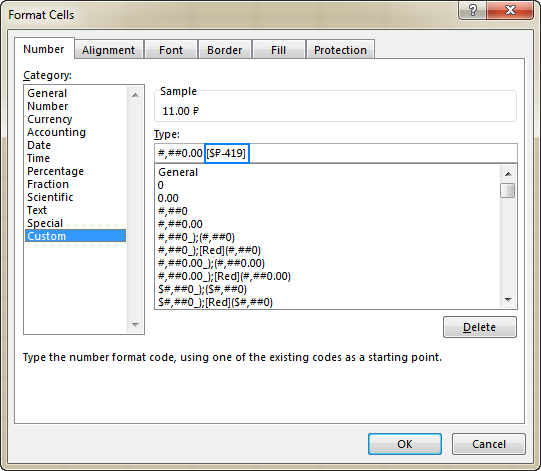

Instead of creating a custom number format from scratch, you choose a built-in Excel format close to your desired result, and customize it. Click OK to save the newly created format.Select a cell for which you want to create custom formatting, and press Ctrl+1 to open the Format Cells dialog.To create a custom Excel format, open the workbook in which you want to apply and store your format, and follow these steps:
#Create brackets for negative number in red in excel mac how to#
How to create a custom number format in Excel Create a custom Scientific Notation format.Show the desired number of decimal places.How to create an Excel custom number format.The aim of this tutorial is to explain the most essential aspects of Excel number format and set you on the right track to mastering custom number formatting. Number formatting in Excel is a very powerful tool, and once you learn how to use it property, your options are almost unlimited. If none of the inbuilt Excel formats meets your needs, you can create your own number format. But there are situations when you need something very specific. Microsoft Excel has a lot of built-in formats for number, currency, percentage, accounting, dates and times. You will learn how to show the required number of decimal places, change alignment or font color, display a currency symbol, round numbers by thousands, show leading zeros, and much more. Click OK to close the Conditional Formatting dialog box.This tutorial explains the basics of the Excel number format and provides the detailed guidance to create custom formatting.Click OK to close the Format Cells dialog box.Use the Color drop-down list to choose the shade of red you want used for the negative percentages.The Font tab of the Format Cells dialog box. Excel displays the Format Cells dialog box with the Font tab selected. In the Box to the right of the second drop-down list, enter the numeral 0.Change the second drop-down list to Less Than.Leave the first drop-down list set to Cell Value Is.Excel displays the Conditional Formatting dialog box. Choose Conditional Formatting from the Format menu.The other way that you can display negative percentages in red is to use conditional formatting by following these steps:

(You can modify the number of decimal places in the format, if necessary.) The format you specify in step 5 displays positive percentages with two decimal places and displays negative percentages in red with two decimal places.

Excel displays the Format Cells dialog box. Select the cell (or cells) that may contain negative percentages.Precise details on how you put together custom formats has been covered in other issues of ExcelTips, so here is the quick way you can get the desired results: One way is to use a custom number format. There are two distinct ways you can display negative percentages in red. This is because Excel doesn't provide a built-in format that addresses this situation. What isn't so obvious is how to display negative percentages in red. It's easy using Excel's built-in number formats to display negative values in red.


 0 kommentar(er)
0 kommentar(er)
